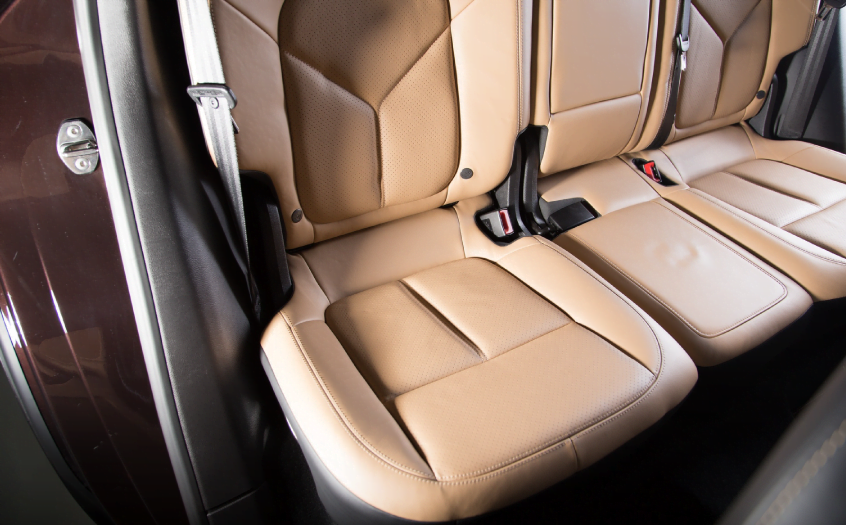How the use of automotive leather benefits the planet - Semiacabado Durli
The remarkable advances in the manufacture of automotive leather over the last 25 years are still little known. As a result, it is also unknown how the use of automotive leather benefits the planet.
According to One 4 Leather - a group dedicated to strengthening knowledge about the sustainability of leather for automotive purposes, as well as informing and inspiring the public - "if the automotive industry stopped using leather altogether, 35 million hides would go to waste in landfills, which means an extra 644 million kg of CO2 emitted annually."
According to the same source, "if demand for automotive leather were to increase by just 10%it would save 3.5 million hides in landfills. That's a saving of more than 64 million kg of CO2 and would correspond to enough for 1.1 million car interiors."
As a result of the increase in global demand for beef, the use of leather is becoming even more crucial as a by-product of this food industry, according to the WWF*. The meat industry processes 331 million cattle every year, creating more than 2.18 billion m3 of hides.
Of these hides, 60% are processed into leather, 18% of which is destined for the automotive sector.
What's more, leather is biodegradable, versatile and, through the circular economy, contributes to the development of local communities around the world.
Especially today, when the natural leather industry is undergoing profound changes towards sustainability.
In this context, the automotive industry has a positive impact on a global scale, which means that the use of automotive leather benefits the planet.
How the use of automotive leather benefits the planet: new technologies
The automotive leather industry has invested in new technologies to obtain a sustainable and ecological product that benefits the environment and reduces the carbon footprint.
Modern automotive tanneries comply with strict regulations and operate with advanced machinery that reduces water and energy consumption.
In order to further determine how the use of automotive leather benefits the planet, there have already been significant changes in the use of chemicals in tanning processes. Tanneries are increasingly incorporating bio-based options.
Car interiors require a resistant and durable material such as leather

Certainly, throughout its useful life, the interior of a car suffers various impacts, such as:
-
- People sit on the benches;
- The driver manipulates the steering wheel, handles and control panel, often with sweaty hands;
-
- There is a risk of stains and dirt;
-
- There is an incidence of light and fluctuating temperatures.
Automotive leather manufacturers have dedicated themselves to developing materials that can withstand these impacts.
In turn, consumers have much higher expectations of automotive leather compared to other uses of leather.
In this sense, leather for car interiors combines a high level of resistance with a feeling of softness and comfort.
As we can see, leather is a material made to last and durability is the first point of its sustainability. It can last for decades, which illustrates once again how the use of automotive leather benefits the planet.
What's more, automotive leather looks as good as when it left the factory and requires little maintenance.
Admittedly, this is one of the demands of today's generations, aware of their responsibility towards our future - sustainable use, whose motto is "buy once, buy well".
In conclusion, using leather, a recycled natural by-product, in the automotive industry brings far more benefits to the planet than an alternative material to leather.
At this point, it should be noted that synthetic options, as opposed to real leather, are derived from petrochemical products, are disposable and their waste is harmful to the environment.
Indeed, not even so-called "vegan leather" escapes the use of materials such as PU and PVC. According to One for Leathers, car manufacturers are keen to promote more environmentally friendly options for leather, in the form of PU and PVC materials. However, most leather alternatives contain more than 80% plastic. It's the small amount of plant content (mushroom, pineapple, cactus) that makes the headlines. These composite materials are difficult and currently very expensive to recycle, so they will inevitably end up in landfill. What's more, they have a very short lifespan, cracking and peeling within a short period of use.
According to the article "5 reasons why leather interiors are the sustainable choice", car owners have reported significant problems with "vegan leather interiors", which blister and blister after short periods of time.
Undeniably, all these materials don't have the performance and durability of real leather and don't even reach the expected lifespan for a car. They need to be replaced a long time in advance.

Durli's semi-finished products and how automotive leather benefits the planet
Durli produces the semi-finished product using an exclusive wet blue transformation process.
Right from the retanning stage, the leather is already given the characteristics it will need at the end of its production. Each piece is crafted in such a way that it becomes unique, meeting the technical specifications.
Consistency is key in the production of automotive leather, and Durli Leathers has invested heavily in key areas, such as searching for the best hides worldwide, building up a very strong team focused on the automotive sector, and acquiring the best machinery and chemicals. In this way, it provides consistency in quality standards with excellent yields and standardized, reliable footage.
In addition, to meet the highest demands of the national and international automotive leather market, Durli produces:
-
- Semi-finished leather with high quality specifications from the most diverse raw material origins: full-grain and corrected leather from Brazil, Argentina and Uruguay and full-grain leather from the United States.
-
- Bio-Leather semi-finished leather to meet new trends and specific niches. With the technology developed by Durli, Bio-Leather is already biodegradable in the pre-tanning, tanning and retanning phases. In this way, it integrates into nature in a period of six months to a year, which is much faster than any leather, which takes up to 50 years to biodegrade. In relation to plastic, the difference is even more obvious, as plastic takes 400 years to start decomposing.
Traceability and Geomonitoring: guaranteeing the quality of raw materials
Durli has developed a pioneering process of individual traceability of its raw materials in order to guarantee that the animals come from socially and environmentally legal areas.
On the other hand, satellite geomonitoring monitors slaughterhouses and direct and indirect farms, ensuring that raw materials are sourced responsibly.
If the leather industry really wants to commit itself to sustainability and how the use of automotive leather can benefit the planet, it needs to surround itself with guarantees regarding the origin of its suppliers' raw materials.
Therefore, Durli definitely does not buy raw materials from suppliers involved in deforestation, invasion of indigenous lands, protected areas, embargoed areas, forced or child labor and disrespect for animal welfare.
Benefiting the planet means taking care of the environment, people and governance

Certainly, in order to take a consistent stance on sustainability and how the use of automotive leather can really benefit the planet, we need to take a holistic view.
Leather for car interiors is the final stage in a production chain that begins on cattle ranches.
Aware of its responsibility as a leather manufacturer with national and international projection, Durli supplies the highest quality semi-finished leather for the automotive industry with environmental compliance and respect for ESG principles.
In addition to its commitment to implementing techniques that respect the environment and reduce its carbon footprint, in line with the Sustainable Development Goals, Durli adopts responsible people management and management methods based on transparency and accountability.
Seals and certifications
Of course, LWG Gold and ISO 9001 seals and certifications with international weight attest to Durli's solidity and credibility in promoting an increasingly sustainable leather industry for the benefit of the planet and people. IATF 16949 certification is in progress.
And so, based on how the use of automotive leather benefits the planet, the leather industry as a whole encourages practices aimed at protecting nature and human life on earth.
Sources and references used:
1 - https://www.one4leather.com/article/Leather-the-ultimate-upcycled-material
2 - https://www.one4leather.com/fact/leather-car-interiors-are-benefitting-the-planet
5 - https://www.one4leather.com/article/5-reasons-to-choose-real-automotive-leather-for-your-car
6 - https://www.one4leather.com/article/why-is-automotive-leather-different-to-other-leathers
7 - https://isitleather.com/blog/sustainable-eco-friendly-leather-industry-future/

